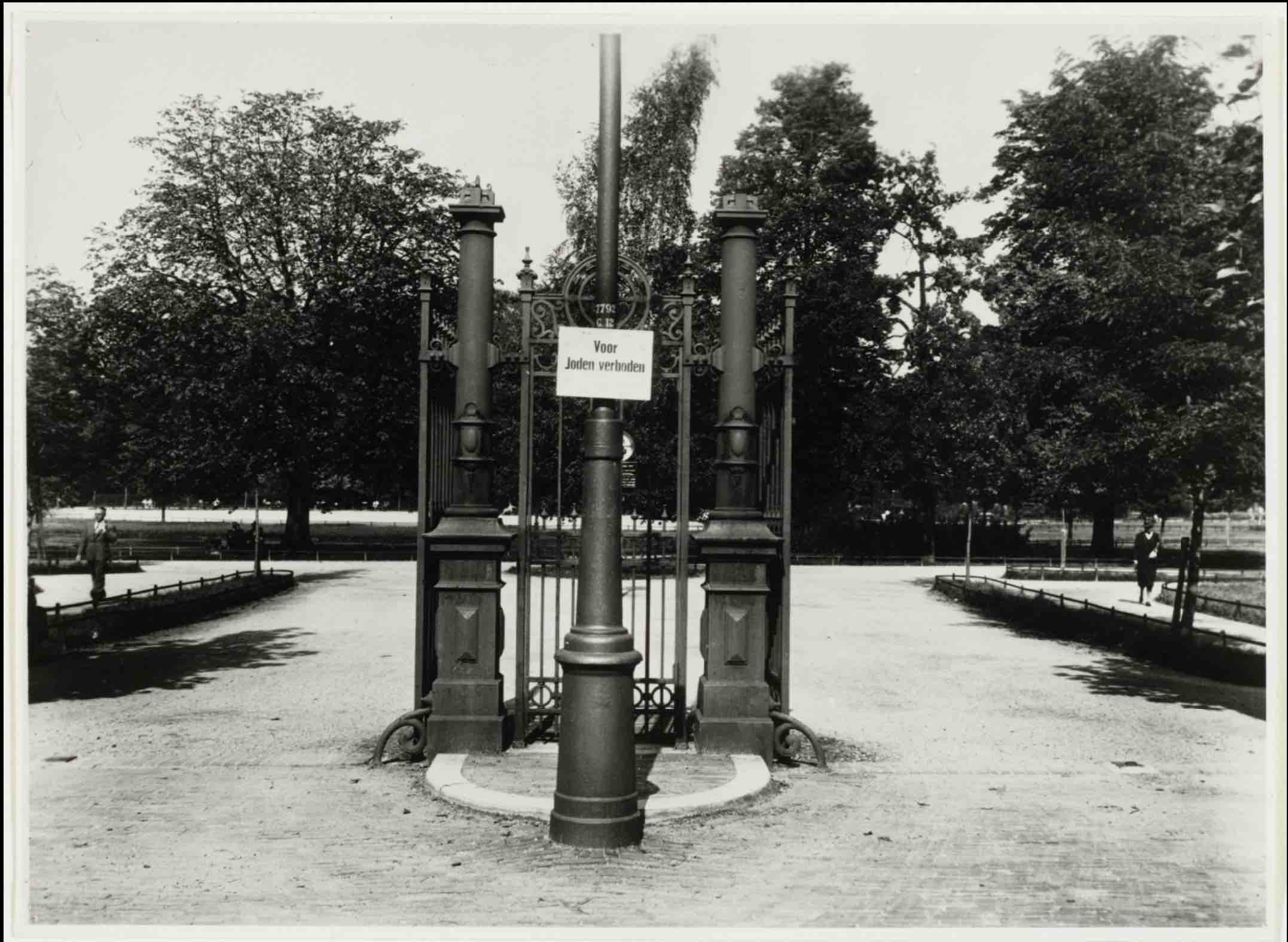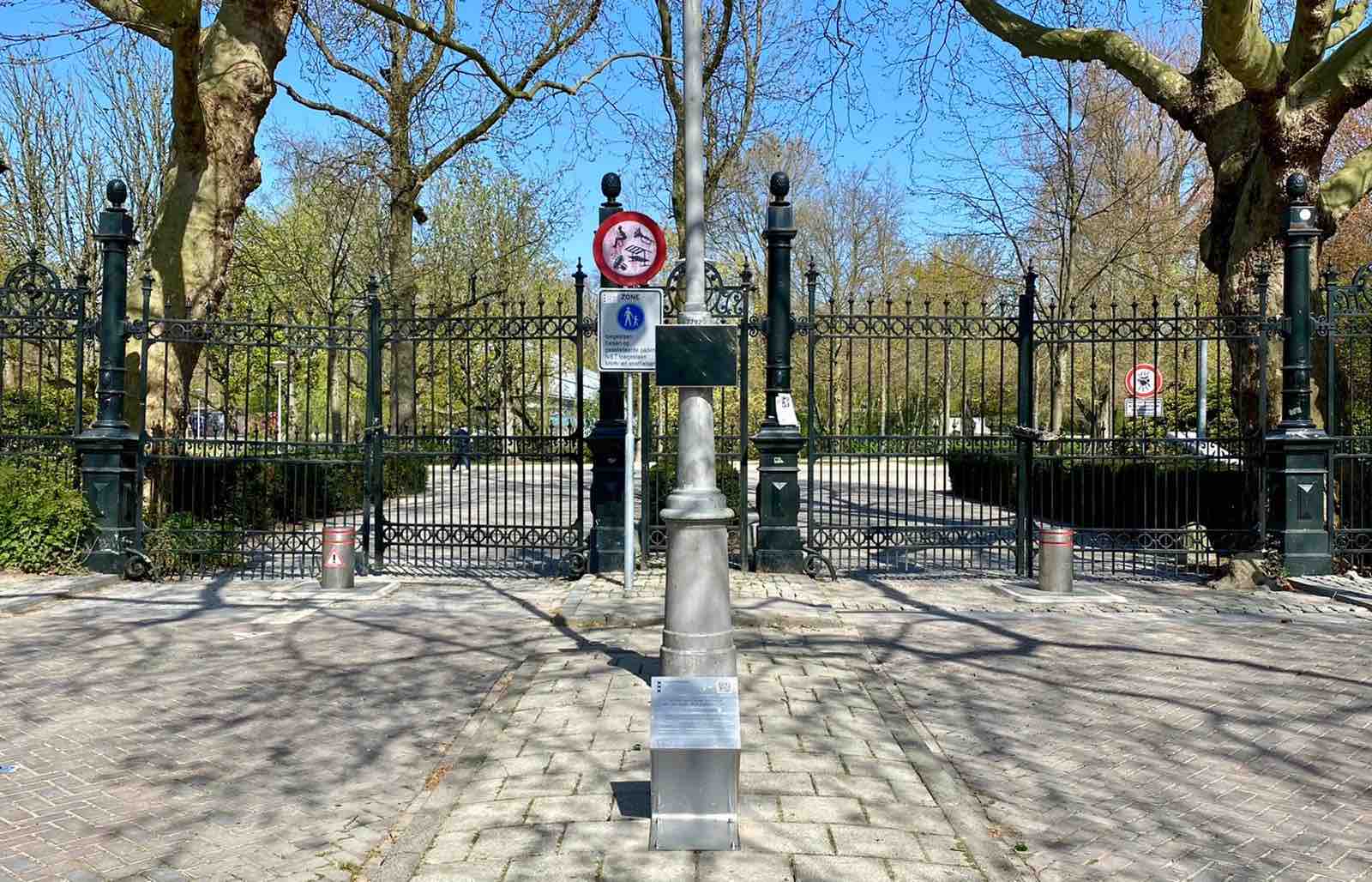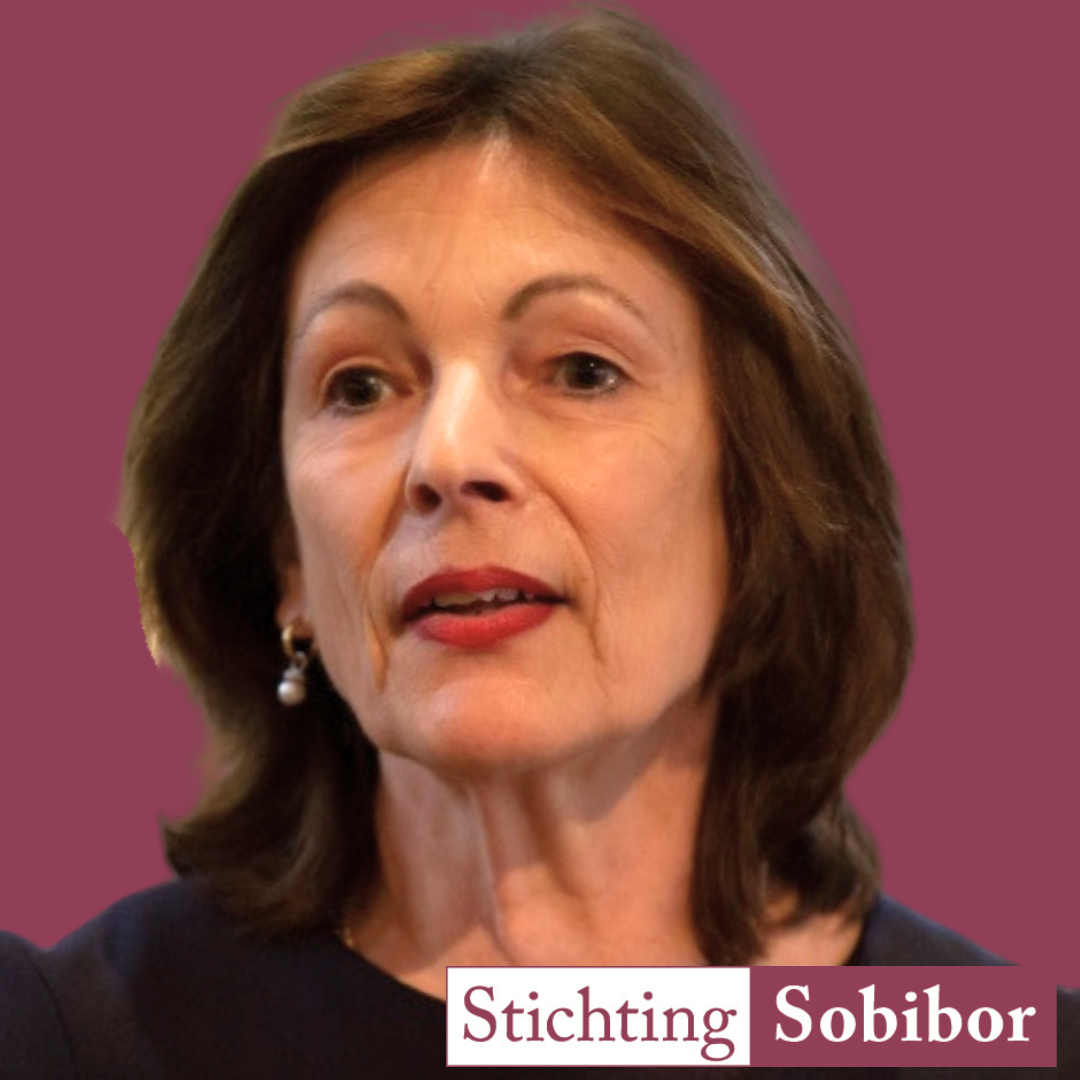
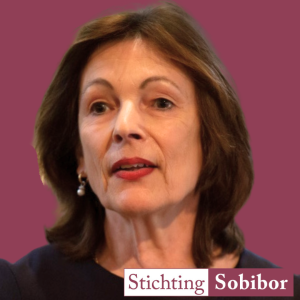
It always feels good to look back at the end of the year: what did we experience together in 2023?
The year started well. We announced an important year: 80 years ago, in October 1943, the uprising in Sobibor broke out. Because of the uprising, we know the history of a place that was meant to remain unknown, a place that remained obscure to those who were there after the war.
Now, after 80 years, a new museum stands on this site, honoring the victims in a way that’s appropriate (if one can say so); here, you can mourn, name the victims, and reflect on how you want to stand in the world. This is the place whose story must continue to be told. We are convinced of this; it remains our mission.
This thought was much needed when the world changed on October 7th. The horrific attack by Hamas in Israel deeply affected us. Although we as a Foundation consciously do not engage in public debate, it is clear that the events in Israel and Gaza are very close to our hearts. This overshadows our reflections, and in this context, I write this message.
In February, we held our networking event. The turnout was large and diverse, reminding us again of the importance of being able to act in a strong network. We introduced our ‘oral history’ project with students from the University College Utrecht. Beautiful conversations with first-generation survivors can be seen and heard on our website. If you are interested in participating and sharing your story, please let us know on info@sobibor.org!
Quietly, on May 14, 2023, in Herzliya, Israel, the last survivor of Sobibor, Sophia Engelsman-Huisman, passed away. She was one of the 18 Dutch survivors of the Sobibor extermination camp and the last survivor of the 34,313 Jews deported from Westerbork to Sobibor.
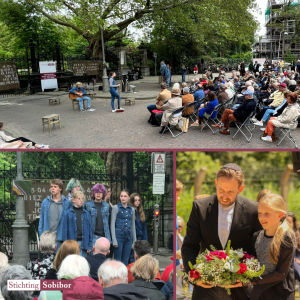 And then ‘Sjiwwe for Sobibor’; a theatre project about the 19 trains that went to Sobibor between March and July 1943. ‘Theater Roestvrij’ created a beautiful, moving performance about life in Westerbork before departure and on the train. This production was a collaboration with ‘Theater Na de Dam’ (‘Theatre after the Dam‘), Westerbork Memorial, and the Sobibor Foundation.
And then ‘Sjiwwe for Sobibor’; a theatre project about the 19 trains that went to Sobibor between March and July 1943. ‘Theater Roestvrij’ created a beautiful, moving performance about life in Westerbork before departure and on the train. This production was a collaboration with ‘Theater Na de Dam’ (‘Theatre after the Dam‘), Westerbork Memorial, and the Sobibor Foundation.
The young actors also performed before our memorial on June 1st near the Vondelpark in Amsterdam. A performance right on the street. Passersby stopped, and it was beautiful to see young people portray history in this way.
The young actors also played an adapted performance after the commemoration of the Children’s Transports in Camp Vught, enhancing this year’s memorial. If you haven’t seen it yet, you can find it on YouTube.
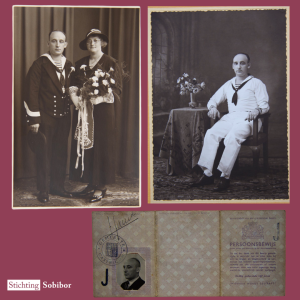
Rosanne Kropman’s book was presented on October 10th in Amsterdam. Thanks to Marc van Velzen, the great-grandson of Jacob’s widow, Rosanne Kropman found photos of Jozeph Jacobs, the Dutchman who planned an uprising in Sobibor in the summer of 1943. The book is now in its third edition, including the discovered photos. The book is at the moment only available in Dutch.
The podcast ‘Erased’ by Audiodroom also deserves mention. It tells the story and the search for Ilse Wagner, a forgotten classmate of Anne Frank. The podcast, partly recorded in Sobibor, is also a beautiful document about Sobibor and its history. The entire podcast is available weggegumd.nl.
Our field and remembrance trips this year were a heartwarming success. During the memorial trip in May, relatives could welcome their new stones. On the in-depth trip, the teachers’ program developed well; more and more teaching materials and methods are being exchanged.
At the beginning of the summer, Ingrid Zijlstra stepped down as secretary and board member. She managed our website, newsletters, and much more for over five years. Fortunately, we found Naomi Koster willing to join the board. We are very pleased with her extensive experience and large network.
For the first time in 3 years, the International Youth Conference was organized in October. This year also marked the 10th anniversary of the first International Youth Conference. We gathered all Dutch participants for a first lustrum celebration at the Provinciehuis in Arnhem. The youngsters, now spread across the country, still found common ground in their memories of the trip. The impact was well articulated in a survey we conducted earlier this year among the youngsters: ‘being there is so much more important than just having heard about it’. If you are interested in the survey results, you can review them here.
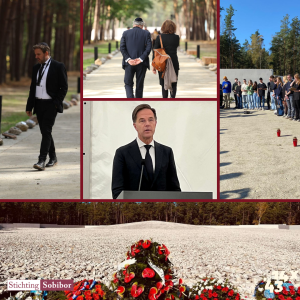 On October 12th and 14th, the commemoration of the Sobibor uprising took place. We traveled there with the board and former board, including the daughter of Jules Schelvis. In Sobibor, we met the Dutch delegation, including outgoing Prime Minister Rutte, who gave the opening speech at the official commemoration; it was subdued and well-considered. On October 14th, we had control over the memorial ourselves, along with Bildungswerk Stanislaw Hantz. With a large group, including the youngsters from the International Youth Conference, we walked the grounds, from the roll call area, through the Lane of Remembrance, to the ash hill. We listened to speeches by Marvin Raab, Tagan Engel, and Rena Blatt, relatives of uprising survivors, and named names. We paused at the stones. The new Lane of Remembrance/Memorial Lane is impressive.
On October 12th and 14th, the commemoration of the Sobibor uprising took place. We traveled there with the board and former board, including the daughter of Jules Schelvis. In Sobibor, we met the Dutch delegation, including outgoing Prime Minister Rutte, who gave the opening speech at the official commemoration; it was subdued and well-considered. On October 14th, we had control over the memorial ourselves, along with Bildungswerk Stanislaw Hantz. With a large group, including the youngsters from the International Youth Conference, we walked the grounds, from the roll call area, through the Lane of Remembrance, to the ash hill. We listened to speeches by Marvin Raab, Tagan Engel, and Rena Blatt, relatives of uprising survivors, and named names. We paused at the stones. The new Lane of Remembrance/Memorial Lane is impressive.
The Dutch Television (NOS) created a special documentary. They told the story of the victims from Westerbork and Sobibor. You can also watch this documentary online.
We remain more aware than ever that we must continue to tell our stories. This was also done by Professor Dr. Marc van Berkel with his story about Holocaust education during the Sobibor lecture at the Amsterdam Resistance Museum at the end of October. The ensuing discussion was intense.
Fortunately, we were able to end the year festively with the awarding of the Jules Schelvis Youth Prize to Oscar Visser. Oscar interviewed his grandfather Joost van Hilten about the war and Sobibor. From the jury report: ‘Oscar’s work describes a process in which, by interviewing a survivor, he not only allows that person to tell their story but also becomes part of the process of passing on the story of Sobibor’. Theater Roestvrij received an honorable mention for ‘Sjiwwe for Sobibor’
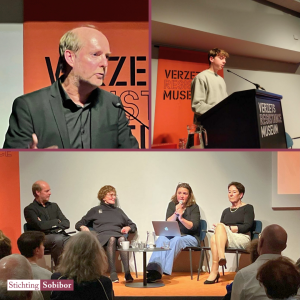
This is what we experienced together in 2023. We are on the eve of 2024, the year that the Foundation celebrates its 25th anniversary! I once again thank my fellow board members Petra, Menno, Bernolf, Fergal, Marijke and Naomi for all the work they do.
Let’s all hope that 2024 can be a calmer year in the world!
Happy New Year
Christine Gispen-de Wied
December 30, 2023




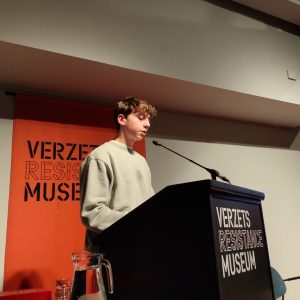 The Sobibor Foundation is proud to announce that the Jules Schelvis Youth Prize 2023 has been awarded to Oscar Visser. His paper, “
The Sobibor Foundation is proud to announce that the Jules Schelvis Youth Prize 2023 has been awarded to Oscar Visser. His paper, “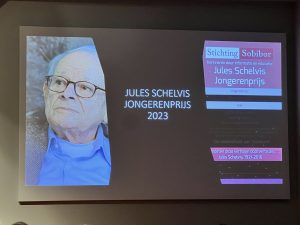
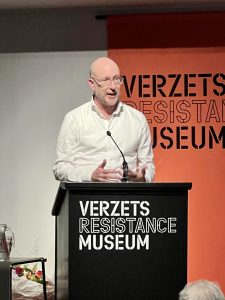 The Sobibor Foundation established this prize in 2020 for young people, who in a special way bring attention to the former Nazi extermination camp Sobibor and feel involved in contributing to the lasting memory of Sobibor. The Jules Schelvis Youth Prize consists of a certificate and a sum of €250.
The Sobibor Foundation established this prize in 2020 for young people, who in a special way bring attention to the former Nazi extermination camp Sobibor and feel involved in contributing to the lasting memory of Sobibor. The Jules Schelvis Youth Prize consists of a certificate and a sum of €250.
